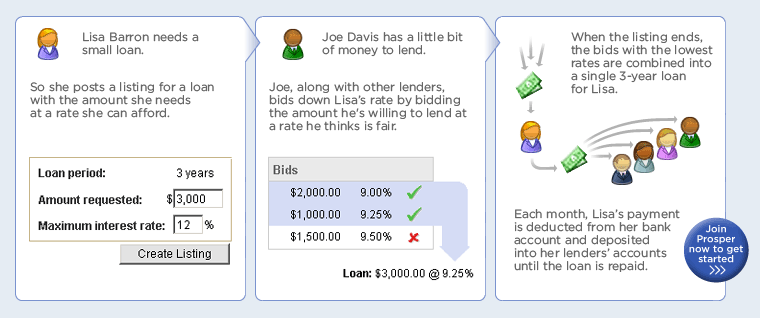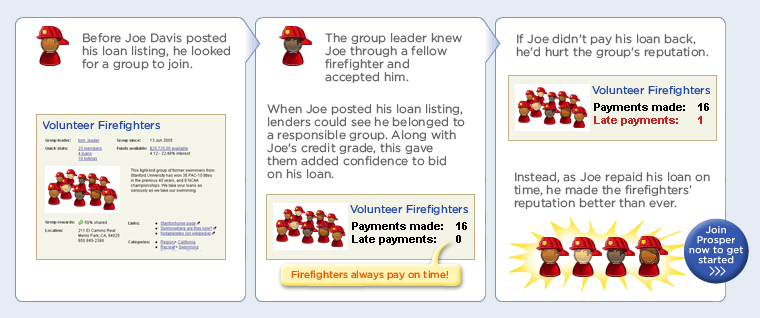冗文

最近斷續在看陳雲先生的「中文解毒」,果然是好書,希望將來有機會詳細點談。但今晚看到一句,實在很想先分享。陳先生常常批評現在中文的冗長、模糊和英語化;這就是一個絕佳例子:你知道以下這句說話講的是甚麼嗎?
每次見面都會為你帶來經濟狀況改善的機會
其實即是白無常帽子上寫的「一見發財」。
Labels: Learning, On the light side, Recommend

每次見面都會為你帶來經濟狀況改善的機會
Labels: Learning, On the light side, Recommend




Labels: Interesting, Learning, Management
[...]有一位大三的學生,我已「三顧草廬」,希望能在她一畢業時便聘請她來我的培訓中心工作呢!她是何許人?在我任教的身心語言程式學(NLP)培訓班中,她是座上客。我很奇怪,在我接觸修讀NLP的朋友中,從未遇過一些大學還沒有畢業的學生;報讀一個NLP的基礎執行師課程也要一萬多元,為何一個學生會來修讀呢?小休時我不禁問她這樣一個問題,她的回答很直接:「我不想一畢業就失業。」[...] 嘩!她還未畢業,她的銜頭已包括「臨床催眠治療師」、「NLP高級執行師」、「大學主修心理學及輔導」。她還主動對我說:「呂Sir,你可以給我實習機會嗎?我不用收費的。」「為甚麼?你需要滿足學校要求的實習時數嗎?」「不是,我只是想累積多些經驗而已。」[...]
另一位大學生也是我十分欣賞的,剛巧她也是修讀心理學的;她得知我正在撰寫一本有關愛情的通識書籍,上個月主動提交了一些文章希望能與我合著。我的回應是不能給她太多的稿費,她的回應是:「呂Sir,有沒有稿費不要緊,[...] 若我寫得好,你也會再找我啦!」好一句「你也會再找我啦」!
[...] 你不想一畢業就失業嗎?你應該知道當怎樣做吧?
Labels: Learning, Reflection
 剛從渡假回來,當天便以立刻投入高速工作中。然後,在Macau GCF的blog上看到介紹這本書。
剛從渡假回來,當天便以立刻投入高速工作中。然後,在Macau GCF的blog上看到介紹這本書。活用時間的最基本技巧:
*將「日常例行公事」集中後一口氣完成
*重要的工作在「中午之前」處理好
*所有的工作都要「設定處理期限」
*從較困難的工作開始處理
*簡單的工作可以擺到後頭再處理
*總檢點「時間的障礙物」
*創意點子最好是固定紀錄在同一個地方
*工作一定要處理到「剛好可停手的段落」
*要經常設定出「休憩時間」
*能夠委任他人處理之事,便交由他人負責
*無意義的閒聊要斷然說「NO」
*「今日事今日畢」
*不要太過吹毛求疵的要求完美
*把每天的工作目標設定在「能力範圍之內」
*即使延遲動手的時間也必須要做之事
Labels: Learning, Management, Reflection

14 Essential Tips for Meeting a Deadline
- Care about deadlines.
- Keep a list of projects and deadlines.
- Communicate a clear deadline.
- Work in a cushion.
- Have a clear outcome.
- Break down the project.
- Focus on the first step.
- Block off adequate time.
- Have a start and complete date for each step.
- Communicate with each step.
- Don't overcommit.
- Learn from mistakes.
- Stay up late.
- Negotiate and meet a second deadline.
Labels: Learning, Reflection
1. Try saying “yes” first. This may sound counterintuitive, but I think of it as a form of mental judo. You say “yes” to the request (assuming you want to do it but don’t have the time to do it now), and then do one of two things: 1) you say “Sure, but I am swamped right now — can you get back to me on this in a month or so? I don’t want to commit to it unless I can actually do a great job on it.” or 2) you say “Sure, but can you do x, y and z first, so we can analyze if this is going to work before we set it into action?” In both cases, you are not turning them down outright, but are putting the action back in their court. I think you should only say these things if you are sincere about wanting to do it, but can’t do it right now. This takes the burden of action off of you for the moment, without having to actually say no.
2. Know your commitments. In order to know when to say no, you need to know what’s on your plate. You should have a running list of all your current projects/assignments, as well as an action task list, made up not of projects but of concrete action steps you need to complete in the next week or so. Once you see this list of all your commitments, you can decide whether the request can fit into your schedule, and if it’s of high enough priority to place on your list of commitments. Guard that list carefully, and only add stuff on there if they are essential.
3. Value your time. One reason a lot of people can’t say no is that they (subconsciously, perhaps) feel that their time is not as valuable as someone else’s time. For example, if someone asks you to do something that they could easily do themselves, and you say yes, you are in effect saying that their time is more valuable than yours — or else why would you do it instead of them? Learn to value your time — you only have a finite amount of it, and it’s perhaps your most valuable asset — and learn to show others that you value it by not taking on requests that don’t actually need to be done by you.
4. Defer. Similar to Strategy 1, this strategy calls for you not to actually decide on something, and not to say yes or no, but to ask the requester to ask you later. For example, you might say, “My plate is really full right now. Could you ping me in two weeks on this?” If the requester is good, they’ll put a reminder in their calendar to ping you in two weeks. If not, they might forget about it. Sometimes, if you defer twice in a row, the other person will give up. But it’s not good to defer too many times on a single request, as it makes you look bad. After two deferrals, on the third request, you should give a definite answer.
5. Be polite, but firm. One mistake a lot of people make is being too nice, and too wishy-washy. They might say no but make it sound like they are wavering. If you respond like that, a strong person will continue to press that request until you say yes, because they think there’s a chance you are going to change your mind. You have to make it clear, if you say no, that you’re not going to change your mind. But don’t be rude about it. A simple, “No, I just can’t right now” will suffice.
6. Pre-empt. If you think that a request is likely to be made, it’s easier to tell people you’re busy before the request is actually made. If you’re meeting with someone, you could say something like, “Before we get started, I have to let you know that my schedule is booked solid for a month, so I won’t be taking on any new projects for at least 30 days.” That will warn the person about to make a request, and they cannot blame you if you say no to a request.
7. “I’d love to, but”. Similar to Strategy 1, this strategy sends the message that this sounds like a great project to you, but you just can’t because of your schedule or other commitments. If the project sounds genuinely interesting, I’ll often say something like, “That sounds like a great project, and I wish I could be a part of it.” I’ll also suggest alternatives if possible, giving the person other people or ideas that might work. Some people will actually appreciate this kind of rejection, as it helps them out.
8. Never say you’re sorry. Again, you have to respect your time. If you apologize, you are sending the message that you are doing something wrong by saying no, that somehow you don’t have a strong right to say no. It’s very tempting to apologize, I know. We often say things like, “I’m sorry, but …” or “I wish I could, I’m so sorry” just because we’re uncomfortable giving an outright no. But again, you are sending the wrong message. See Strategy 5 for a better approach.
Labels: Learning


Worship at the Next Level: Insight from Contemporary Voices
by Tim A. Dearborn (Editor), Scott Coil (Editor)

Visual Faith: Art, Theology, and Worship in Dialogue
by William A. Dyrness

Worship in the Shape of Scripture
by F. Russell Mitman

Leading in Prayer: A Workbook for Ministers
by Hughes Oliphant Old

The Voice of Our Congregation: Seeking And Celebrating God's Song for Us
by Terry W. York, C. David Brolin

Art as Religious Studies
by Doug Adams, Diane Apostolos-Cappadona

Christly Gestures: Learning to Be Members of the Body of Christ
by Brett P. Webb-Mitchell

Reel Spirituality: Theology and Film in Dialogue
by Robert K. Johnston
Labels: Learning
 If you need to write business letters from time to time (like I do), this customer relations letter from USAirways may be of interest to you. The letter explains about recent delays caused by the bumpy trainsition to a new computer system. Well, that's not the point. The interesting part is the use of casual language in business communication - as if you are chatting with a friend. So vocabularies like "ugh," "dummy," "slogged," and "clunky" appear in where no such words have gone before.
If you need to write business letters from time to time (like I do), this customer relations letter from USAirways may be of interest to you. The letter explains about recent delays caused by the bumpy trainsition to a new computer system. Well, that's not the point. The interesting part is the use of casual language in business communication - as if you are chatting with a friend. So vocabularies like "ugh," "dummy," "slogged," and "clunky" appear in where no such words have gone before.Labels: Interesting, Learning
People who need money request it, and other people bid for the privilege of lending it to them. Prosper makes sure everything is safe, fair and easy.


Labels: Learning

第一型 -- 改革型
深層動機:理想
表面形態:對抗
應對手法:穩健
最渴望:事事完美,零缺點
最恐懼:受良心責備,遭他人譴責
最難達到的美德:祥和 (Serenity)
最難克服的執念:怨恨 (Resentment)
跟第一型的人相處...
1. 諒解他們對你的批評,因為通常他們出於好意。稱讚他們做事認真,可以的話主動分擔一下他們的工作。
2. 切忌隱瞞事實真相;做錯事要認真的道歉,並承擔責任。如果是初犯,而是被他們發現你的錯誤的話,他們通常都會原諒。如果錯誤是出自你的陋習或不專心,不認真的話,就麻煩得多了。
3. 第一型的人是特別重小節的。例如約會切忌遲到 (可以的話最好早到,因為他們也會)。他們也很重禮節,"唔該","多謝" 這些詞語絕不可少。
4. 儘量避免直接否定他們,可以反過來問些啟發他們思考的問題(如果.....又會怎樣?),營造一個第七型的環境,他們會開放很多。
第三型 -- 成就型
深層動機:認同
表面形態:對抗
應對手法:穩健
最渴望:自己的能力被認同,讚賞
最恐懼:不被賞識,感到懷才不遇
最難達到的美德:坦誠 (Honesty)
最難克服的執念:虛榮 (Vanity)
跟第三型的人相處...
1. 讚揚並肯定他們的成就。
2. 給他們意見,但不要直接批評或替他們作主。
3. 切勿在他們面前炫耀你的功績,盡量讓他們發現你的優點。
4. 和他們商量時,要著重"行動"和"成果",其他的他們都不太有興趣。
5. 如果想和他們保持良好的關係,盡量避免直接跟他們競爭,可以的話選擇與他們合作。
Labels: Learning, Reflection
Labels: Learning, Reflection

Top 10 Hot Jobs for 2007:
- Experience Designer
- Medical Researcher
- Web Designer
- Security Systems Engineer
- Urban Planners
- Viral Marketers and Media Promoters
- Talent Agents
- Buyers and purchasing agents
- Art Directors
- News Analysts, Reporters, and Bloggers
Labels: Learning
 Yesterday in my massage therapist's office, I was reading an old issue of Wired while I wait and run into this article which I found very interesting. The concept of crowdsourcing... this is the first time I heard about this term, but the reality of it has already been happening around me.
Yesterday in my massage therapist's office, I was reading an old issue of Wired while I wait and run into this article which I found very interesting. The concept of crowdsourcing... this is the first time I heard about this term, but the reality of it has already been happening around me.Labels: Learning

Think traffic jams are an unbeatable force?
Bill Beaty, an electrical engineer and “traffic physics” enthusiast, doesn’t think so.
After conducting his own experiments, Bill’s discovered a simple trick anyone can do to relieve two common types of traffic jams: the “merging-traffic jam” and the “traffic wave”.
The strategy is to simply maintain a large space in front of you instead of instinctively speeding up to close any gaps. It’s counter-intuitive, but according to his own experiments, it works.
Labels: Learning

Labels: Learning, Reflection
老人辨完手續,拿了借來的1美元就準備離開銀行。
一直冷眼旁觀的分行長,怎麼也弄不明白:有50多萬美元抵押品的人,為何來銀行借1美元?於是他追上前去問個究竟。
老人笑道:「來貴行前,我問過好幾家金庫,他們保險箱的租金都很昂貴。所以啊,我就在貴行寄存這些証券,租金實在太便宜了,一年才6美分...」
所有「正常思維」的人,都會走同樣的路子并受到同種矛盾的限制:既然目的是寄存,但希望省錢,只能一家一家去詢問并比較租金高低;然而也自然有共同的擔憂,那就是寄存物品的保險系數,往往和租金高低成正比...
惟獨這位老人跨越了「正常」:改變思維方向,用「反常」的方法達到了「正常」的目的,而且將「租金」減少到幾乎等於零。
生活中許多事情也如此,尤其身處逆境,不妨換一種思維,或許就是另一片天空。
Labels: Learning
一個老人走進一家銀行,來到信貸部坐下來。他身穿豪華西裝、高級皮鞋,還有領帶和金領帶夾。
「想借1美元。」
「甚麼,1美元?」
「對啊,可以嗎?」
「當然可以,只要有抵押,再多些也無妨的。」
老人打開豪華皮包,拿出一堆股票、債券等等,放在經理的桌上。
「總共值50多萬美元,夠了吧?」
「當然!當然!不過,你真的只借1美元嗎?」
「是的,就1美元。」
「那麼年息為6%,只要您按時付出利息,到期我們就退給您抵押品。」
老人辨完手續,拿了借來的1美元就準備離開銀行。
一直冷眼旁觀的分行長,怎麼也弄不明白:有50多萬美元抵押品的人,為何來銀行借1美元?於是他追上前去問個究竟。
Labels: Learning
